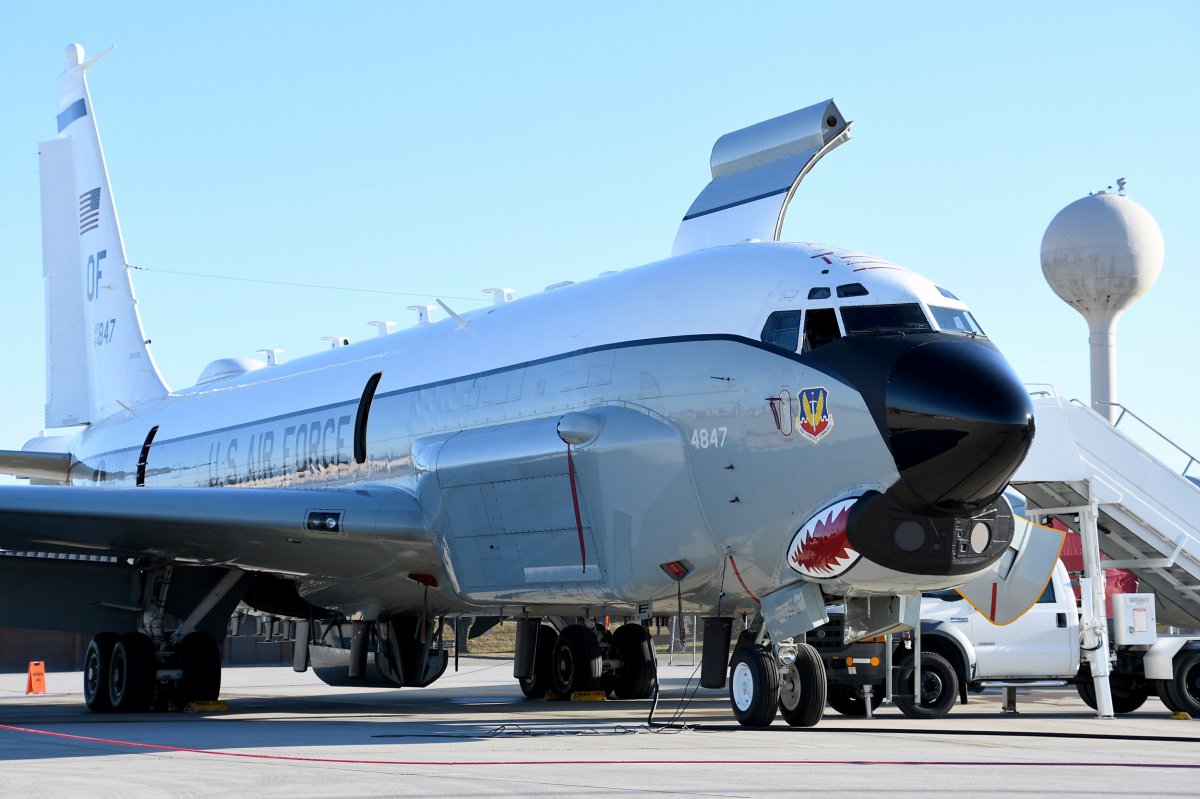A pair of United States spy planes were tracked conducting joint patrols near China and North Korea this week, according to Newsweek's map, using open-source flight data.
Newsweek has emailed the Chinese Defense Ministry and the North Korean Embassy in Beijing, China, for comment. The U.S. Pacific Air Forces previously told Newsweek that its reconnaissance aircraft were conducting "planned, routine operations" in the region.
Why It Matters
Several variants of the U.S. Air Force RC-135 spy planes, including the RC-135V and the RC-135U, were deployed at Kadena Air Base, a U.S. military hub on Japan's Okinawa Island. Both RC-135 variants were tracked operating near the coast of China last month.
China continues to build and modernize its military power, which includes the largest navy in the world by hull count. North Korea has yet to cease its nuclear and missile activities, including the test-launching of weapons.
What To Know
Based on data captured by the aircraft tracking service Flightradar24, Newsweek's map showed that an RC-135V aircraft and an RC-135U aircraft flew over the northern waters of the South China Sea, near China's southern coast and the island of Hainan, on Tuesday.
Both aircraft departed from Kadena. The RC-135V Rivet Joint can detect, identify, and geolocate electronic signals, while the RC-135U Combat Sent is capable of locating and identifying foreign military land, naval, and airborne radar signals, the U.S. Air Force said.
Hainan is the home of the second Chinese aircraft carrier, CNS Shandong, which was at the base on Tuesday. China's first aircraft carrier, CNS Liaoning, and the third but yet-to-be-commissioned one, CNS Fujian, were pierside in Eastern China, according to the map.
On Thursday, the same pair of the Rivet Joint and the Combat Sent aircraft headed north toward the Korean Peninsula. They patrolled along the south of the Demilitarized Zone (DMZ), which separates the two Koreas since the armistice of the Korean War in 1953.
In addition to Tuesday and Thursday flights, the Combat Sent aircraft was tracked flying over the East China Sea on Monday. This came as a fleet of three Russian naval vessels transited in the same area of waters during its deployment in the Asia-Pacific region.

What People Are Saying
The U.S. Pacific Air Forces (PACAF) previously told Newsweek: "PACAF remains committed to a free and open Indo-Pacific focused on fostering regional security and stability throughout the region."
The U.S. Indo-Pacific Command said on May 30, 2023, of China's unprofessional intercept of U.S. aircraft over the South China Sea: "The United States will continue to fly, sail, and operate—safely and responsibly—wherever international law allows."
What Happens Next
The U.S. Air Force is likely to continue its spy flights near China and North Korea. In the past, Beijing had protested what it called "close-in reconnaissance" of Chinese territory by the U.S. military, demanding the Pentagon put an end to its "provocations" immediately.














)





 English (US) ·
English (US) ·